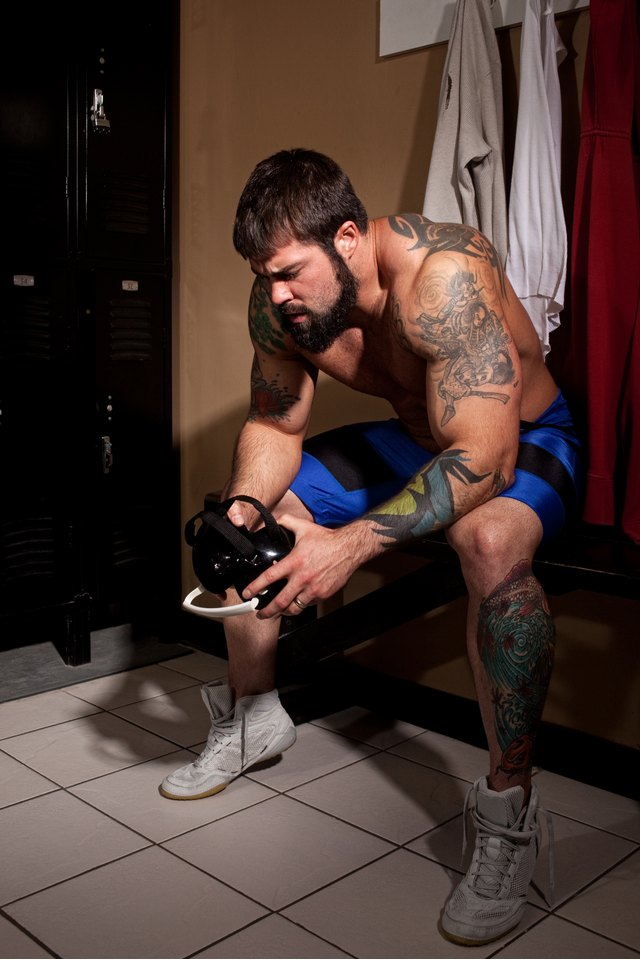How to Do a Grapevine Pin in Wrestling

A grapevine pin traps your opponent by capturing both legs and both arms. Since he's on his back with all four limbs immobilized, it's virtually impossible to escape from this combination in the three seconds you have before the referee slaps the mat. Grapevine pins work best for wrestlers with long legs -- they make it easier to wrap up the opponent's legs and provide better leverage. You can enter a grapevine pin once you're on top of your opponent and have his back facing toward -- but not necessarily already on -- the mat.
Drive your opponent onto his back by slamming your chest into his. The more chest contact and pressure you can deliver, the better. This move is best if your body is perpendicular to your opponent's at the beginning of the move.
Hook your arms through your opponent's arms while simultaneously rotating so your body is parallel to his. Pull up with your legs to lift his arms away from the floor.
Wrap one leg around your opponent's leg -- the one closest to the leg you're using. Use your foot and ankle to lock it in position. Once you've secured that leg, do the same with the other.
Arch your hip forward while lifting your heels toward the ceiling. This picks up your opponent's legs, pulling them off the mat.
Keep driving downward with your hips and chest. Use your hands, which should still be near the mat, to keep your opponent from rolling you over in one direction or the other.
Continue keeping the pressure on until you score your pin.
Tips
These instructions are for a double grapevine, the grapevine move most likely to result in a pin. You can use a one-leg grapevine -- or "single grapevine" -- to initiate a leg ride.
Tips
- These instructions are for a double grapevine, the grapevine move most likely to result in a pin. You can use a one-leg grapevine -- or "single grapevine" -- to initiate a leg ride.
Writer Bio
Jake Wayne has written professionally for more than 12 years, including assignments in business writing, national magazines and book-length projects. He has a psychology degree from the University of Oregon and black belts in three martial arts.
